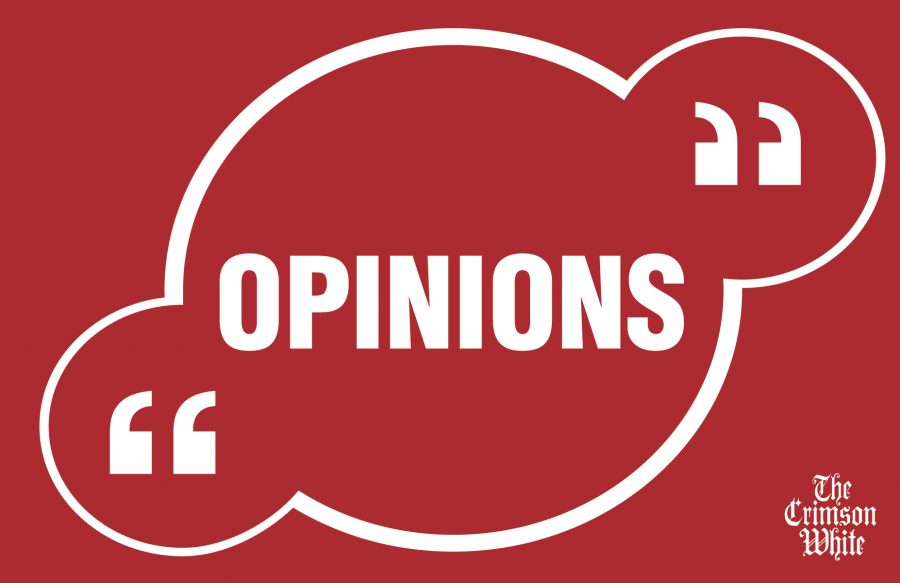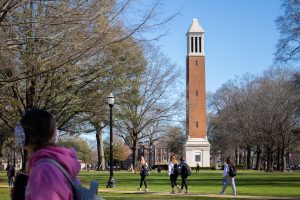To reopen campus safely, protect and empower workers
June 24, 2020
President Bell’s letter introducing the first draft of UA’s plan for campus operations in the fall promises “We will adjust. We will learn.” This promise is important because the proposed plan fails to address many crucial aspects of the University’s operations. While the safest plan of action would be to host all classes online and avoid a return to campus entirely, it does not seem that option is being seriously considered.
The current plan authorizes mandatory masking in classrooms, reductions in classroom capacity, hybrid course delivery, and other policies that mitigate the rapid disease transmission on campus. If we are going to return to campus, we need a plan that approaches campus health and safety holistically. This means the University must consider more than what individual students, staff and faculty do to prevent the transmission of the virus. The University itself needs to change the way it operates to minimize the impact of COVID-19 on campus.
The University’s plan reflects the weaknesses in the UA System Comprehensive Health and Safety Plan rather than effectively addressing them. First and foremost, neither of these plans guarantee that stated goals for testing, tracing, masking and quarantining will actually become reality. The UA System Plan, for instance, suggests that universal testing upon re-entry will be “subject to the availability of adequate testing.”
The concern that there may not be enough tests is well-founded, as our federal and state-level health infrastructures have largely failed us during the last three months of the pandemic. These failures aside, the University of Alabama has known that COVID-19 would pose a risk for the fall semester for months. With several weeks before campus operations restart, there is still time to acquire the necessary equipment for the universal testing of students, faculty and staff in August.
The University needs to make their testing and PPE procurement plans public in order to show their efforts to test everyone returning to campus. Failure to provide universal re-entry testing and adequate sentinel testing throughout the semester will lead to unnecessary infections and likely deaths. If it becomes clear that universal testing is not feasible, the University needs to make significant changes to its re-entry plan. We cannot allow “subject to availability” to mean complacency and neglect.
The current plan also fails to address how certain public health measures like quarantine and isolation will be handled as a matter of employment and labor. The University needs to expand Family and Medical Leave to allow staff and faculty to make public health-conscious choices without fear of lost income. At a minimum every worker on campus must be eligible for paid leave benefits equal to recommended quarantine or medical leave, and these benefits should not count against existing medical leave balances. The University must also guarantee it will cover medical costs either directly or by instructing the University’s Blue Cross and Blue Shield plan to fully cover treatment.
Additionally, undergraduate students who work on campus should receive normal pay in the event of shifts missed due to quarantine or illness. The COVID-19 pandemic has wreaked havoc on the local and national economy. Failure to consider the financial implications of health and safety recommendations puts workers and students in the impossible position of choosing between making ends meet and keeping the community healthy. The University must ensure that no one on campus has to make that choice.
Moving forward, the University must operate with increased public transparency and accountability. Communication about the transition to online classes during the spring semester did not inspire confidence in the University’s decisions. President Bell and other members of the administration must take the confusion and frustration of the staff, faculty and students seriously.
The fall semester presents an opportunity to change the way the University communicates with students and workers. Faculty and staff of all ranks who actually teach in classrooms and work in public offices should be included in the Incident Command Center so the day-to-day reality of campus life informs administrative decisions. We also need an independent channel for workers and students to report unsafe conditions on campus without fear of retaliation. The COVID-19 pandemic presents an opportunity for greater shared governance at UA. Failure to empower workers and students in this moment would betray the President’s promise for flexibility and growth.
The points outlined here reflect the vision of Safe Return UA, a faculty, staff and student-led campaign to ensure that the University’s return to operation reflects a broader understanding of the University’s role in the Tuscaloosa community. For more information or to add your voice to the call for campus safety, read our Statement of Expectations for Campus Health and Safety. The influx of students in the fall will impact more than just people who work and study on campus. The University’s decisions affect spouses, children, neighbors, friends, business owners—in short, all of us. Given the disproportionate impact of COVID-19 on poor and Black communities locally and across the country, now is not the time for the University to carry on business as usual. We have an opportunity to not only make the fall semester safer, but also to grow The University of Alabama into an institution that actively supports, empowers and respects its workers, students and community.
Safe Return UA is a staff, faculty and student-led campaign to ensure universal COVID-19 testing, adequate family and medical leave, employment protections and public accountability for the upcoming academic year at the University of Alabama.










